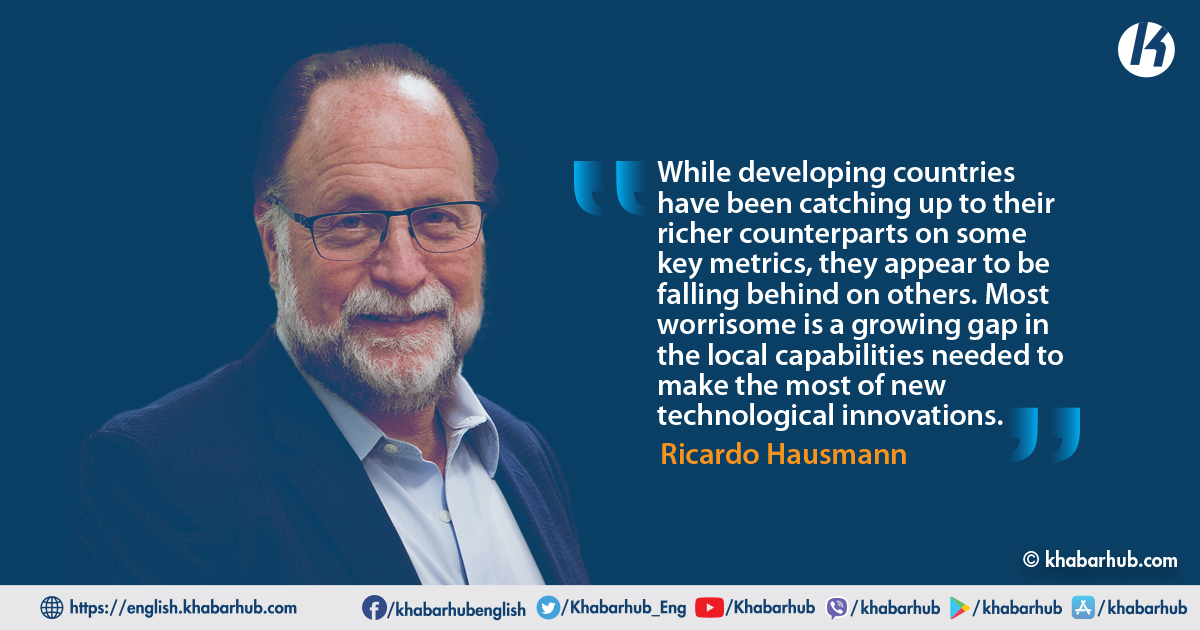Over the past 60 years, some development gaps across countries have narrowed impressively. But others have persisted. And one has widened, with ominous implications for the future.
On the positive side, life expectancy in low-income countries has risen from 55% of US levels in 1960 (when it was 70 years) to over 80% now (when it is 78.5 years), while in many middle-income countries – including Chile, Costa Rica, and Lebanon – people live longer than Americans do.
A similar story can be told about education. Even as tertiary school enrollment in the United States increased from 47% in 1970 to 88% in 2018, many countries have dramatically narrowed the gap.
Latin America, for example, went from less than 15% of the US level in 1970 to 60% of today’s much higher US enrollment rate, with some countries (such as Argentina and Chile) reporting enrollment rates higher than the US. In the same period, Arab countries went from less than 13% of US levels to more than 36% today.
But other gaps remain stubbornly large. While US per capita income more than tripled between 1960 and 2019 (at purchasing power parities), the income gap between it and Latin America, South Africa, and the Arab world did not narrow.
Incomes in these regions are less than one-quarter of US levels (after adjusting for differences in purchasing power). Sub-Saharan Africa has remained at about 6% of US levels, and India at about one-tenth. Only in some East Asian and East European countries have income gaps narrowed significantly vis-à-vis the US.
Universities in middle-income countries tend to be focused on teaching, because they are concerned with keeping education costs down. Their better research scholars direct their efforts toward scientific publications, because they prefer that to dirtying their minds with worldly practical problems on behalf of for-profit firms.
That brings us to the problem with ominous implications. A narrowing education gap without a narrowing income gap suggests a widening technological gap: the world is developing technology at a rate faster than many countries can adopt it or adapt it to their needs.
Economists often disregard this issue, because they think of technology as something that is embedded in machines and thus capable of flowing naturally into countries unless governments do things like restrict trade, competition, or property rights.
But technology is better understood as a set of answers to “how-to” questions. And because different people do things differently, technological adoption requires some adaptation to local conditions, which in turn requires local capabilities.
One metric of such capabilities is the rate at which countries file patents. As with all metrics, this one is imperfect for many reasons (not all solutions to how-to questions get patented; not all patents are equally useful; and not all industries are equally likely to patent their innovations). Nonetheless, the numbers are so stark that they cannot be dismissed as mere measurement quirks.
For its part, the US patent rate has more than tripled over the past 40 years, from around 270 patents per million people per year in 1980 to around 900 in recent years.
And it is not even the world leader. South Korea’s patent rate has increased by a factor of almost 100 in the past 40 years, from 33 to 3,150 per million; it is now patenting at a rate over three times higher than that of the US.
Japan patents at twice the US rate, and China has increased its patenting rate by a factor of more than 250 – going from less than four per million in 1980 to more than 1,000 today.
Countries like Austria, Germany, Denmark, France, Great Britain, Norway, New Zealand, and Singapore patent at a rate at least one-quarter that of the US. And other countries, such as Australia, Canada, Switzerland, Iran, Israel, Italy, the Netherlands, Poland, and Slovenia, come in at just above one-seventh the US rate.
In this context, it is remarkable just how low patenting rates can be in some middle-income parts of the world. In Latin America and South Africa, for example, the patenting rate is 70 times lower than in the US, while in the Arab world it is 100 times lower.
These incredibly low rates are notable for three reasons. First, they far exceed the gaps in university enrollment. Second, the patenting gap is huge relative to the gaps in scientific publications.
One would expect very low rates of scientific publications if the problem was a lack of scientists. But in Latin America, the Arab world, and South Africa, the patent gap is, respectively, nine, ten, and 13 times larger than the gap in scientific publications vis-à-vis the US.
Finally, these gaps are large relative to other countries that, until recently, were less developed in terms of income, university enrollment, or scientific development.
China, Malaysia, Thailand, and even Vietnam now outrank Latin America, South Africa, and the Arab world in the World Intellectual Property Organization’s Global Innovation Index.
Unless business and university leaders can drive new thinking about technological adoption, adaptation, and innovation, the income gap between countries and the rich world will persist.
It is always convenient to blame governments for bad outcomes. But, in this case, the dearth of patents in middle-income countries with large university systems seems to be the fault of businesses and universities themselves. It is a symptom of an unexploited synergy between these two domains.
Universities in middle-income countries tend to be focused on teaching, because they are concerned with keeping education costs down. Their better research scholars direct their efforts toward scientific publications, because they prefer that to dirtying their minds with worldly practical problems on behalf of for-profit firms.
At the same time, businesses, especially large ones, invest astonishingly little in research and development, partly because they never have made such investments before, but also because they assume that they will not have any university partners with whom they can transform money into innovations.
They may not be wrong in that belief: most universities are not set up to accommodate this kind of work. But in a properly functioning innovation ecosystem, business investment in R&D would translate into large cashflows that universities could use to fund a significant and effective R&D capacity, without raising tuition fees.
For that ecosystem to emerge, universities in middle-income countries need to change their mindset, structure, governance, and hiring practices; and businesses need to learn the value of investments in R&D from their more successful colleagues in other countries.
Unless business and university leaders can drive new thinking about technological adoption, adaptation, and innovation, the income gap between countries and the rich world will persist.
(Ricardo Hausmann, a former minister of planning of Venezuela and former chief economist at the Inter-American Development Bank, is a professor at Harvard’s John F. Kennedy School of Government and Director of the Harvard Growth Lab)
Copyright: Project Syndicate









Comment